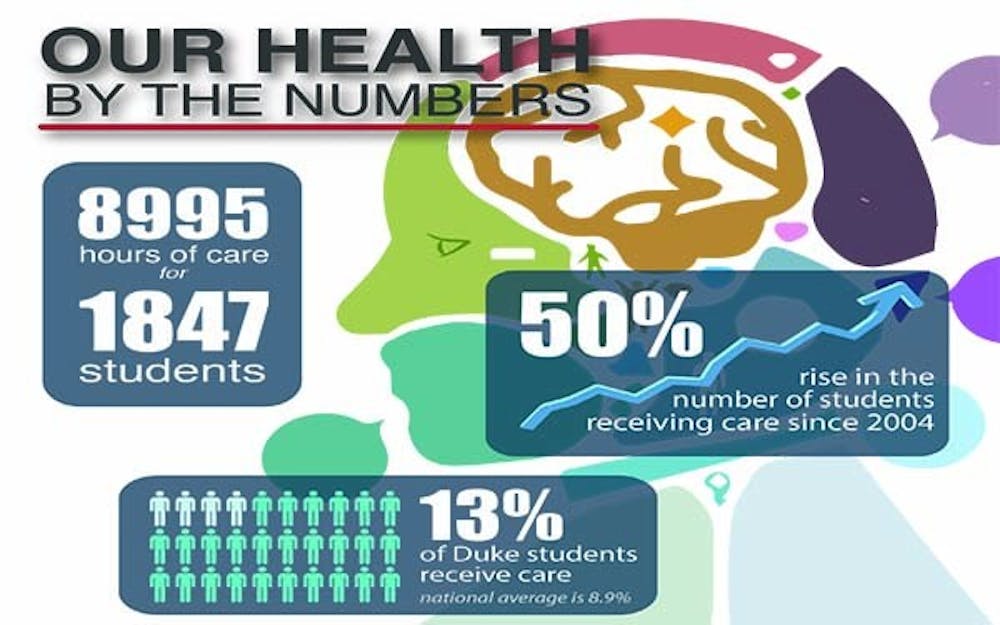Data given to The Chronicle by Counseling and Psychological Services shows a rise in the number of students served by CAPS.
Over the past 10 years, the number of students seen by CAPS staff has increased by more than 50 percent—with a rise of more than 10 percent in the last four academic years. The total number of hours which CAPS spends treating students has remained relatively constant, however, as has the number of emergency appointments.
“We really see the gamut, from adjustment issues, stress, a lot of anxiety and depression and of course there’s always the more severe end of the spectrum too,” CAPS Director Wanda Collins said.
During the 2013-14 school year, 13 percent of Duke students used CAPS services, compared to a national average of 8.9 percent at similarly sized institutions, according to a survey from the Association of University College Counseling Center Directors.
“For most universities across the country, the utilization is around 7 to 10 percent,” Collins said. “At more elite institutions it tends to be 10 to 13 percent and upwards.”
Collins noted that Duke and peer institutions typically experience higher numbers due to the unique stresses of the environment. Constantly being surrounded by high-performing peers can increase the pressure students feel to excel, she said.
“Duke students definitely are very bright, very focused on their academics, very stressed out and kind of nerdy in a good way," Collins said. "I think the pressure of being at an institution like Duke and being with students who are of that same caliber creates an extra intensity, more so than you would have at most universities.”
Nationally, AUCCCD statistics show a spike in anxiety issues over the past five years, while the percentage of students affected by depression or relationship issues has remained relatively steady. In 2013, the AUCCCD reported that more than 40 percent of college students were affected by anxiety, almost 40 percent were affected by depression and just more than 35 percent had relationship issues.
Collins attributed the increase in anxiety levels to a number of factors, including the cost of college and the challenging job market, both of which increase pressure on students.
She also cited the fact that many more high school students with mental illnesses now have the resources to handle their illness through high school and to attend college. Although these students are able to succeed in a college environment, they may still require counseling or other treatment.
“The impact of that at a university level is that you see more of a range of mental illness, you see students who might really struggle with lots of issues while they’re also trying to be a college student, which can be challenging,” Collins explained. “Most of them manage to get through it.”
Get The Chronicle straight to your inbox
Signup for our weekly newsletter. Cancel at any time.

